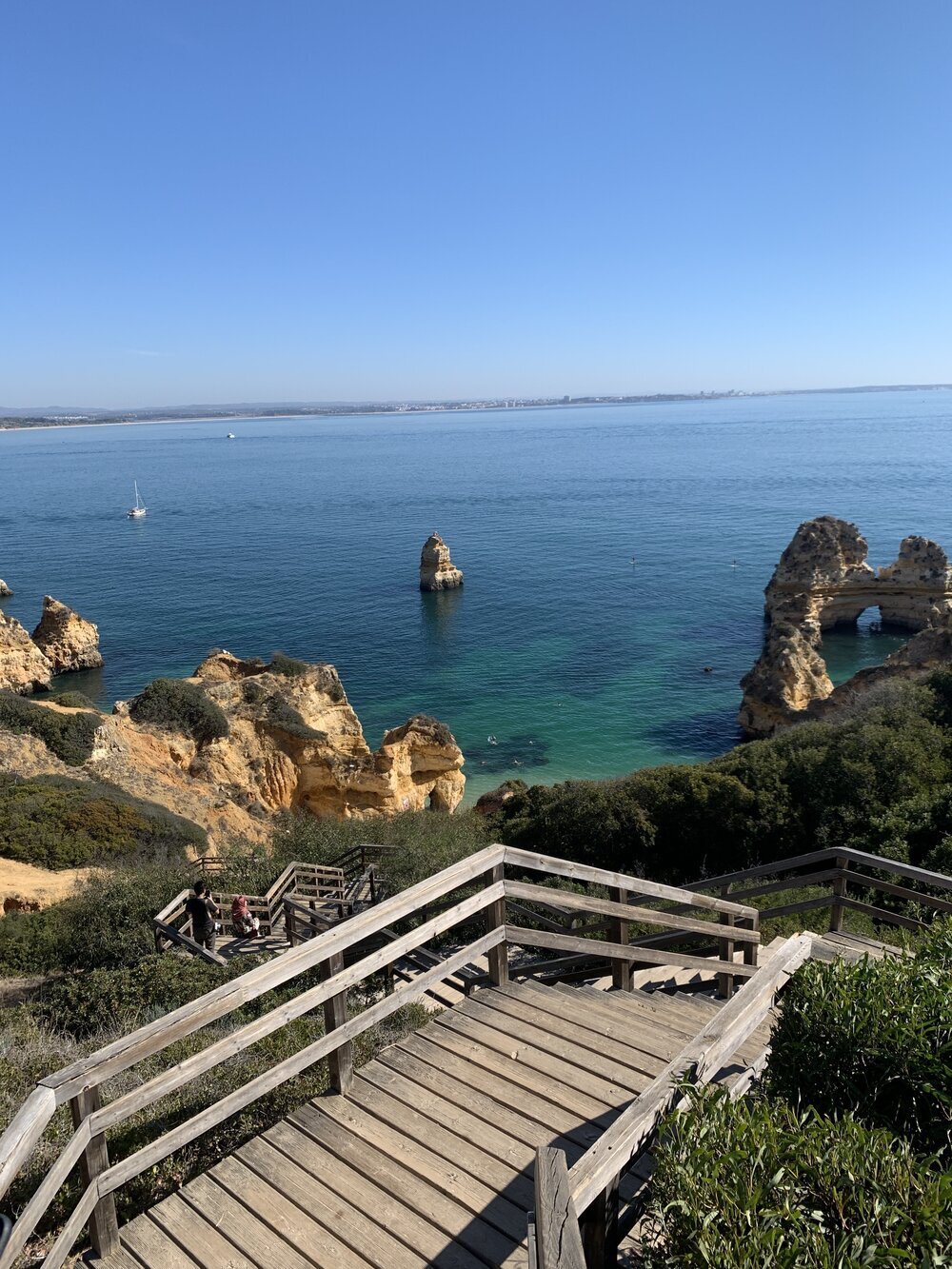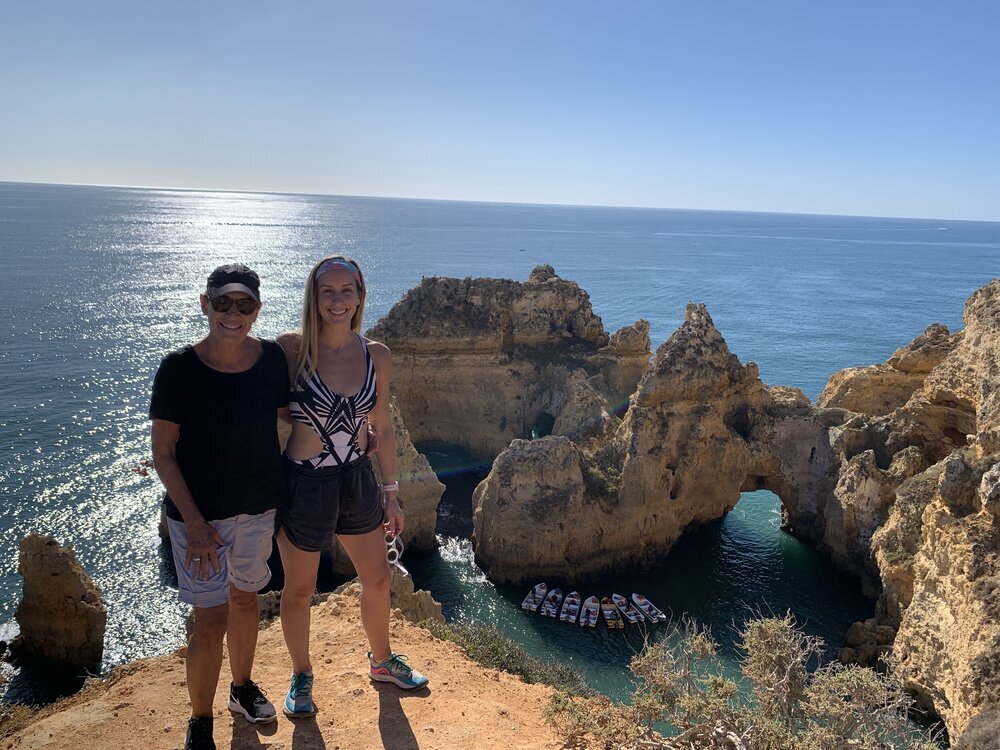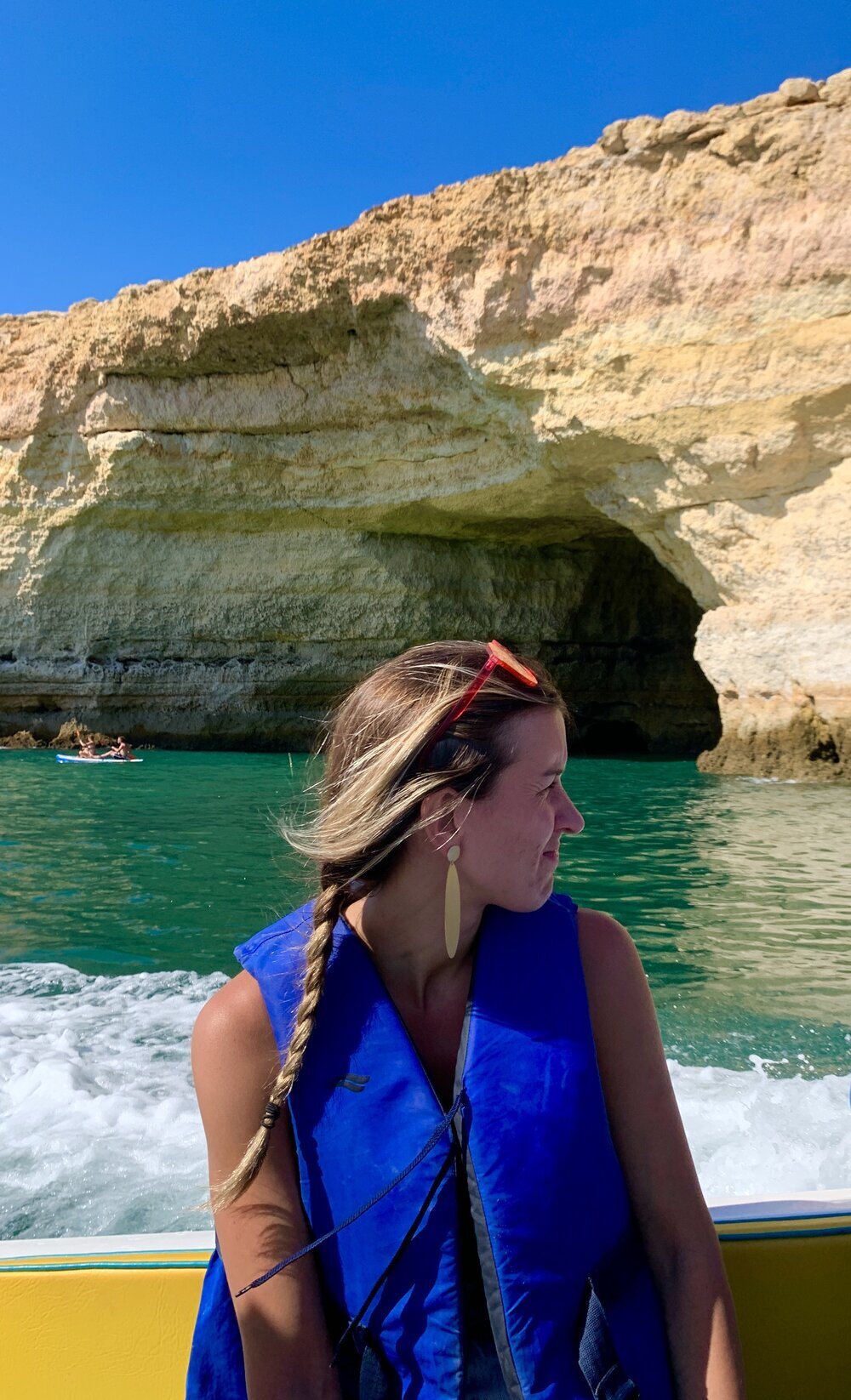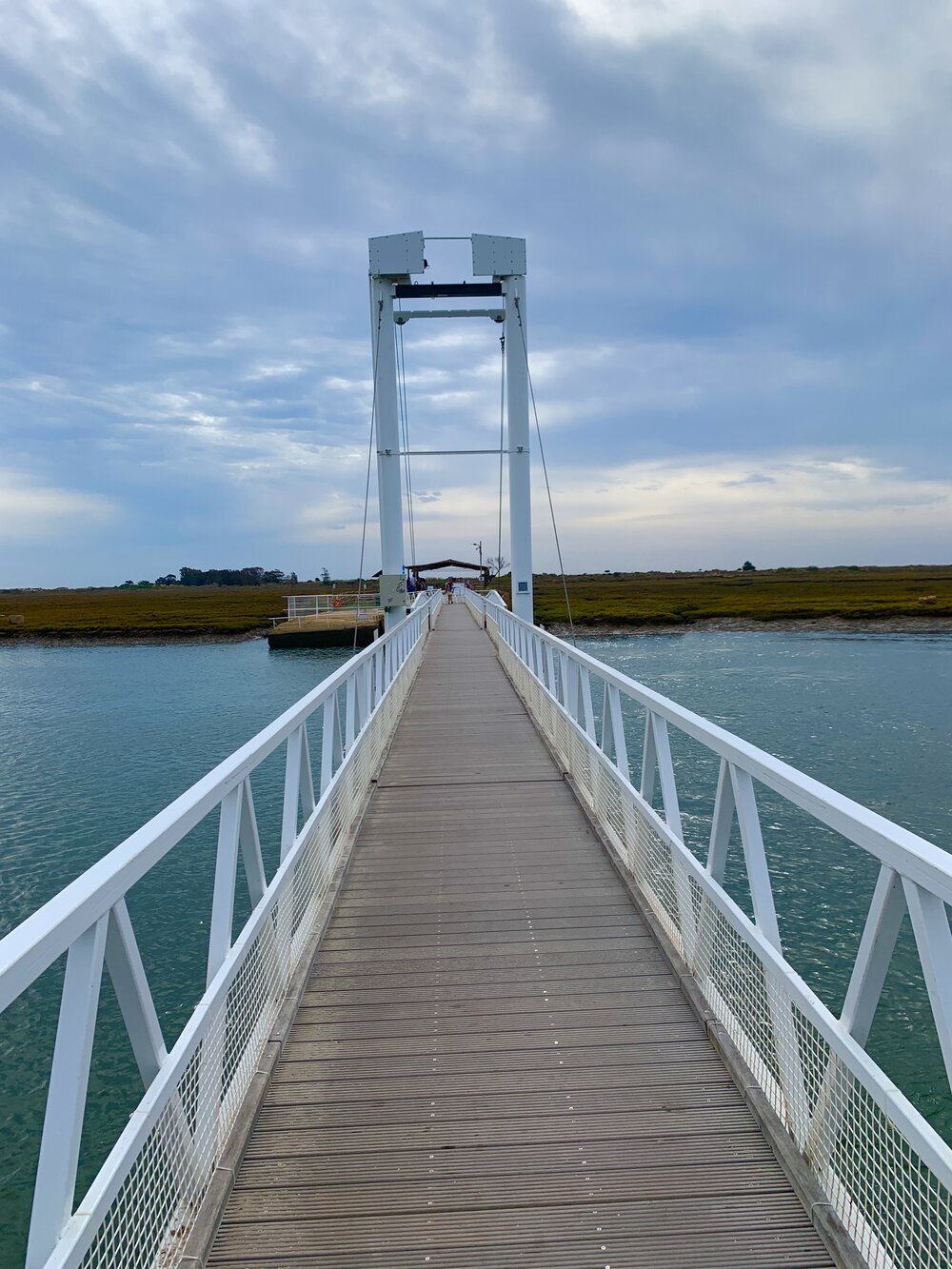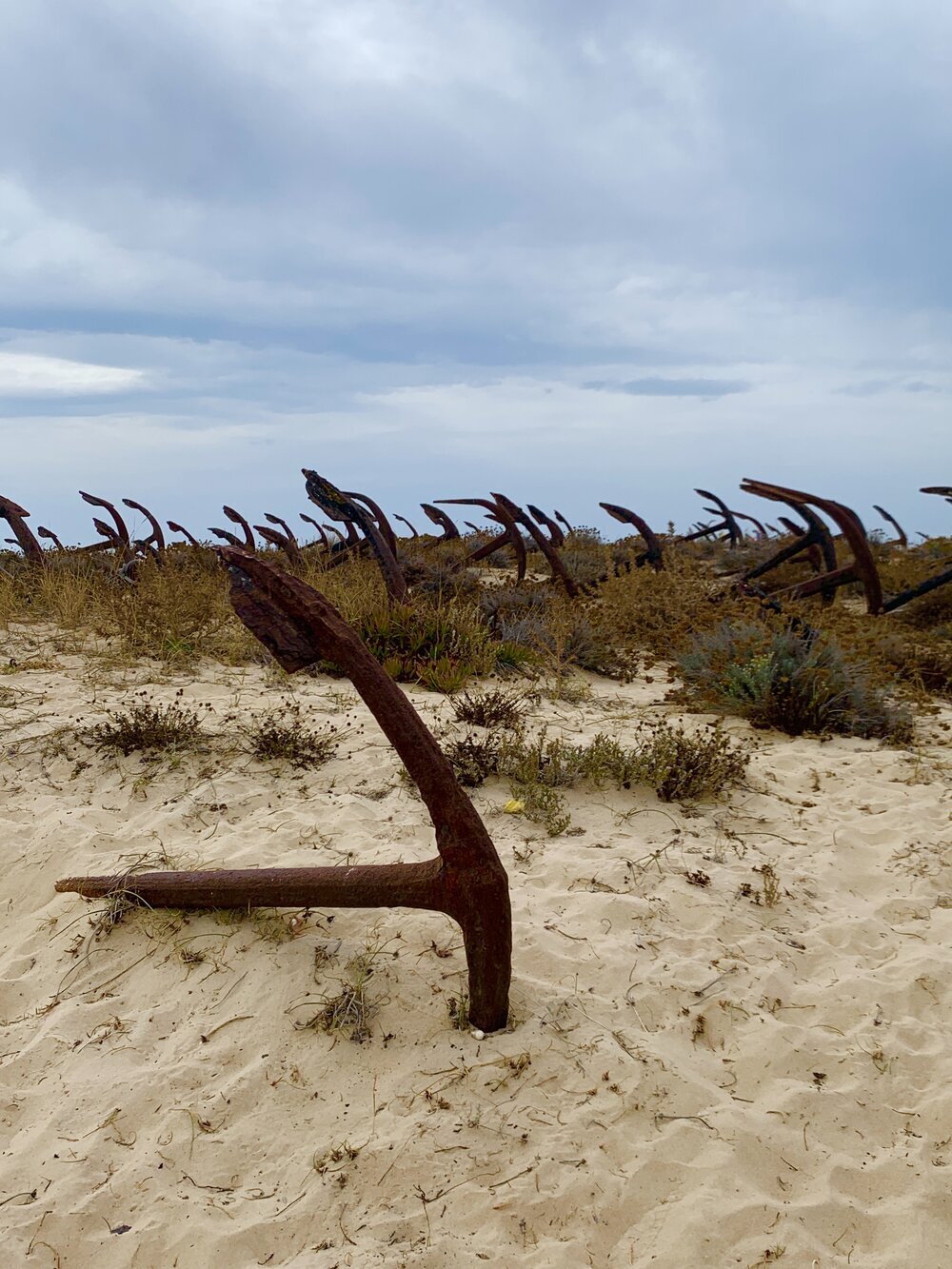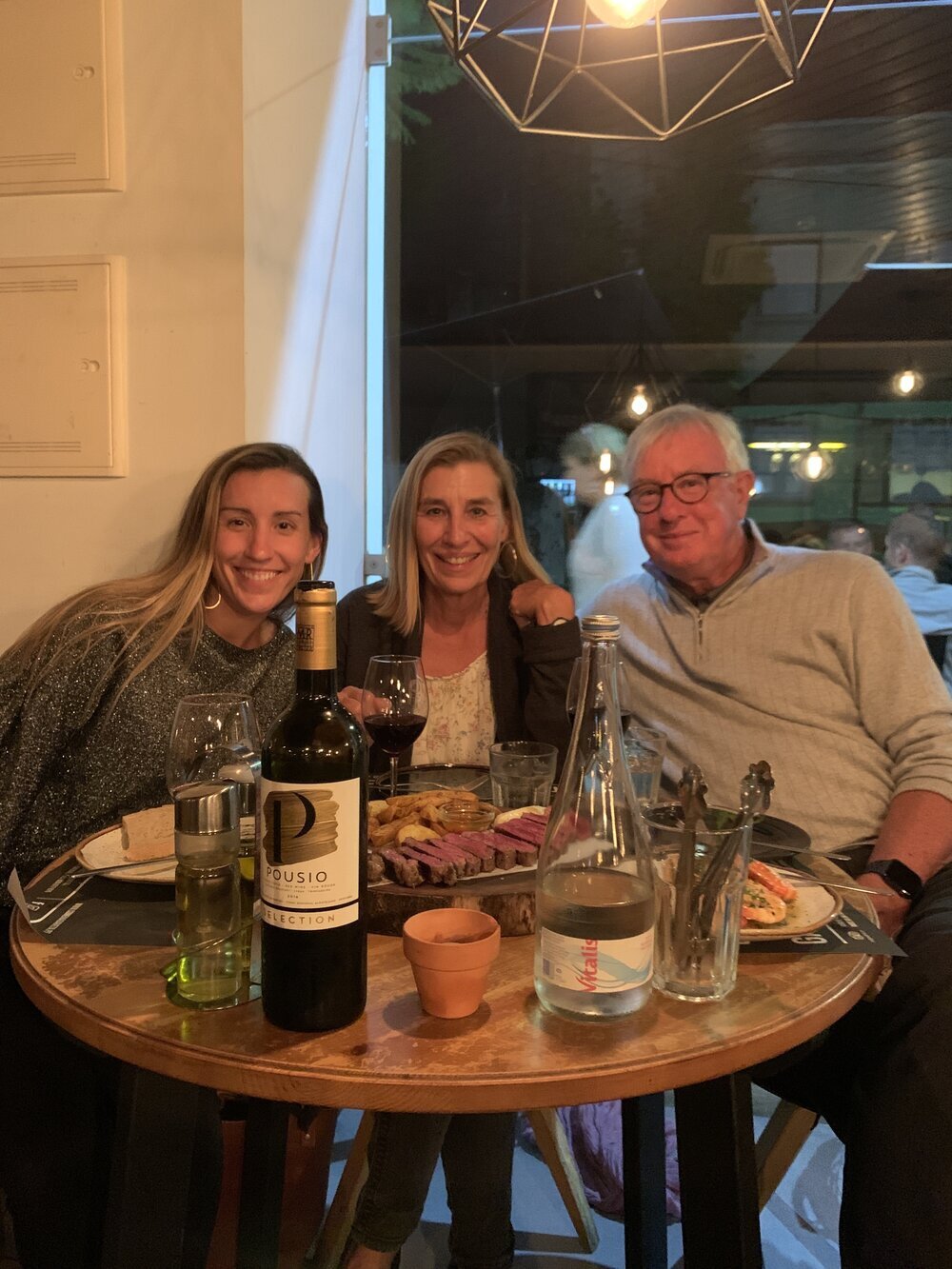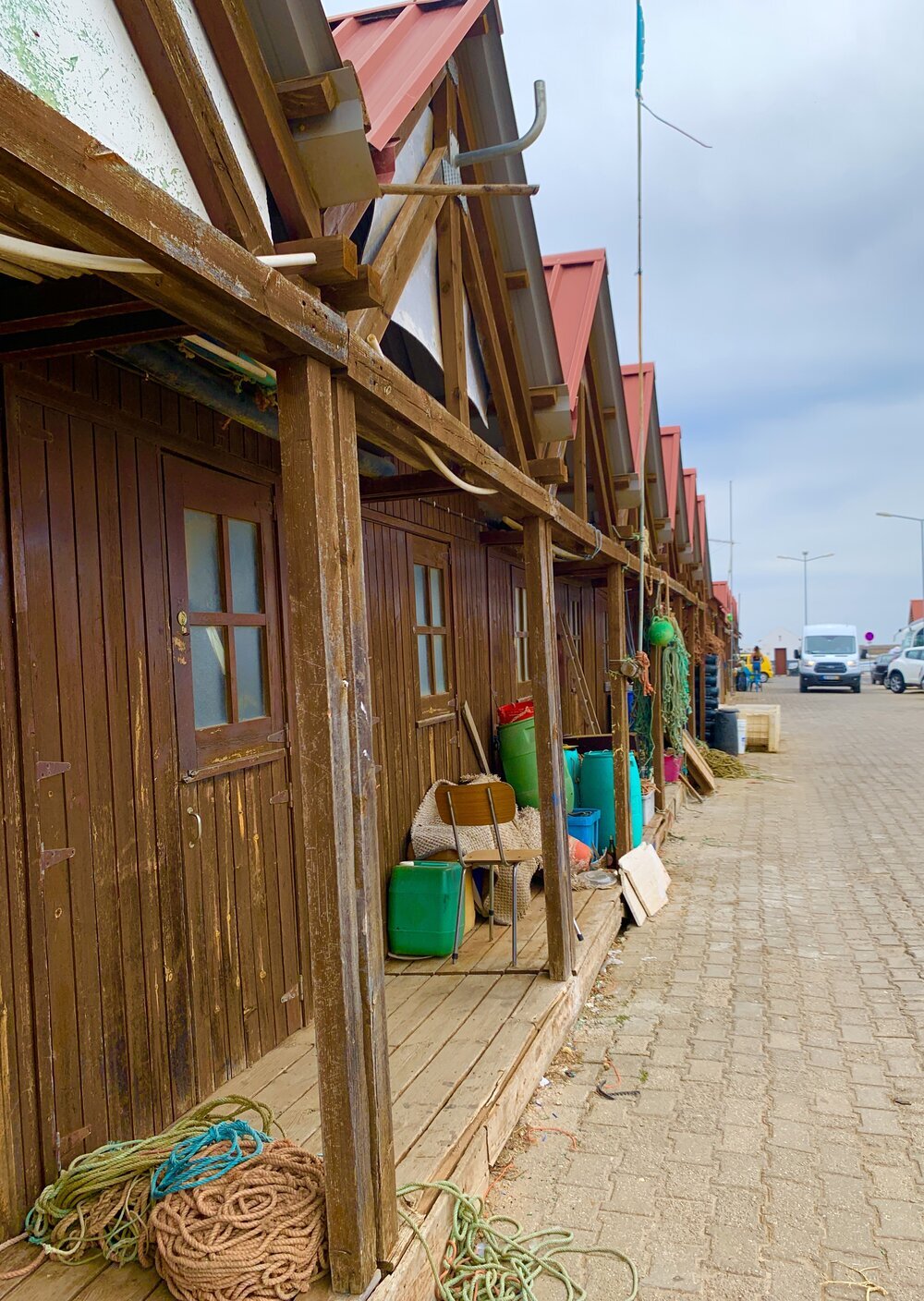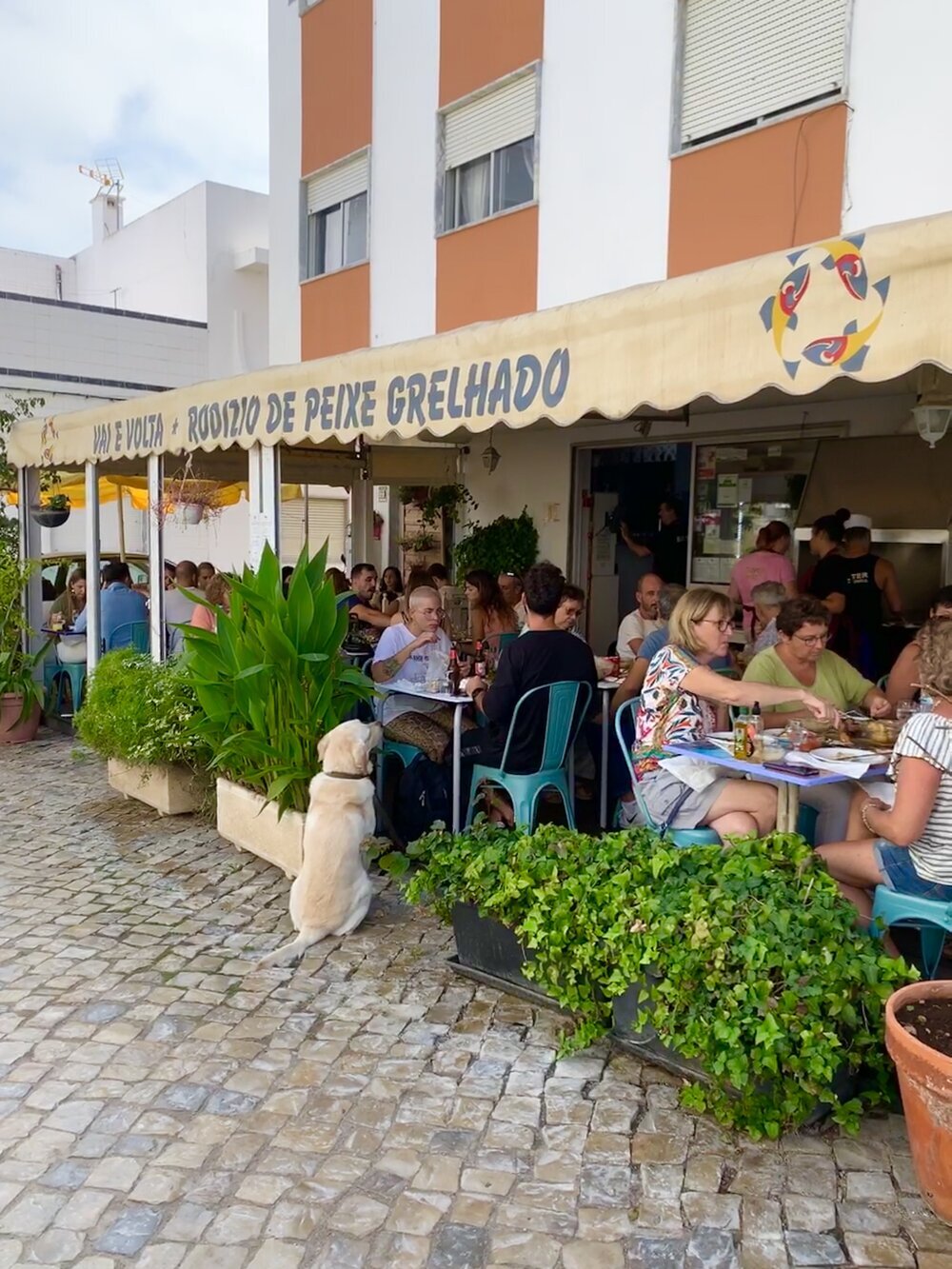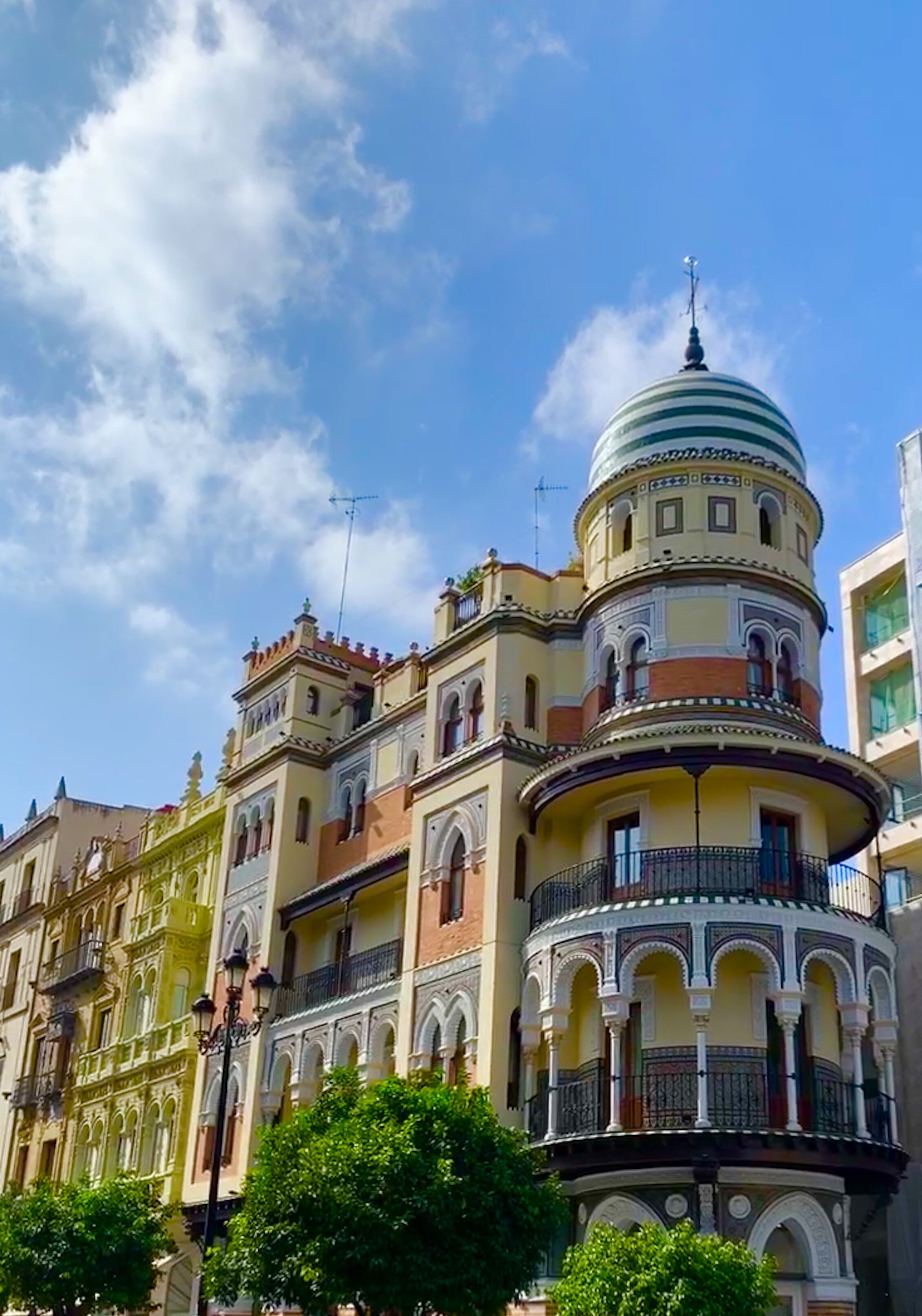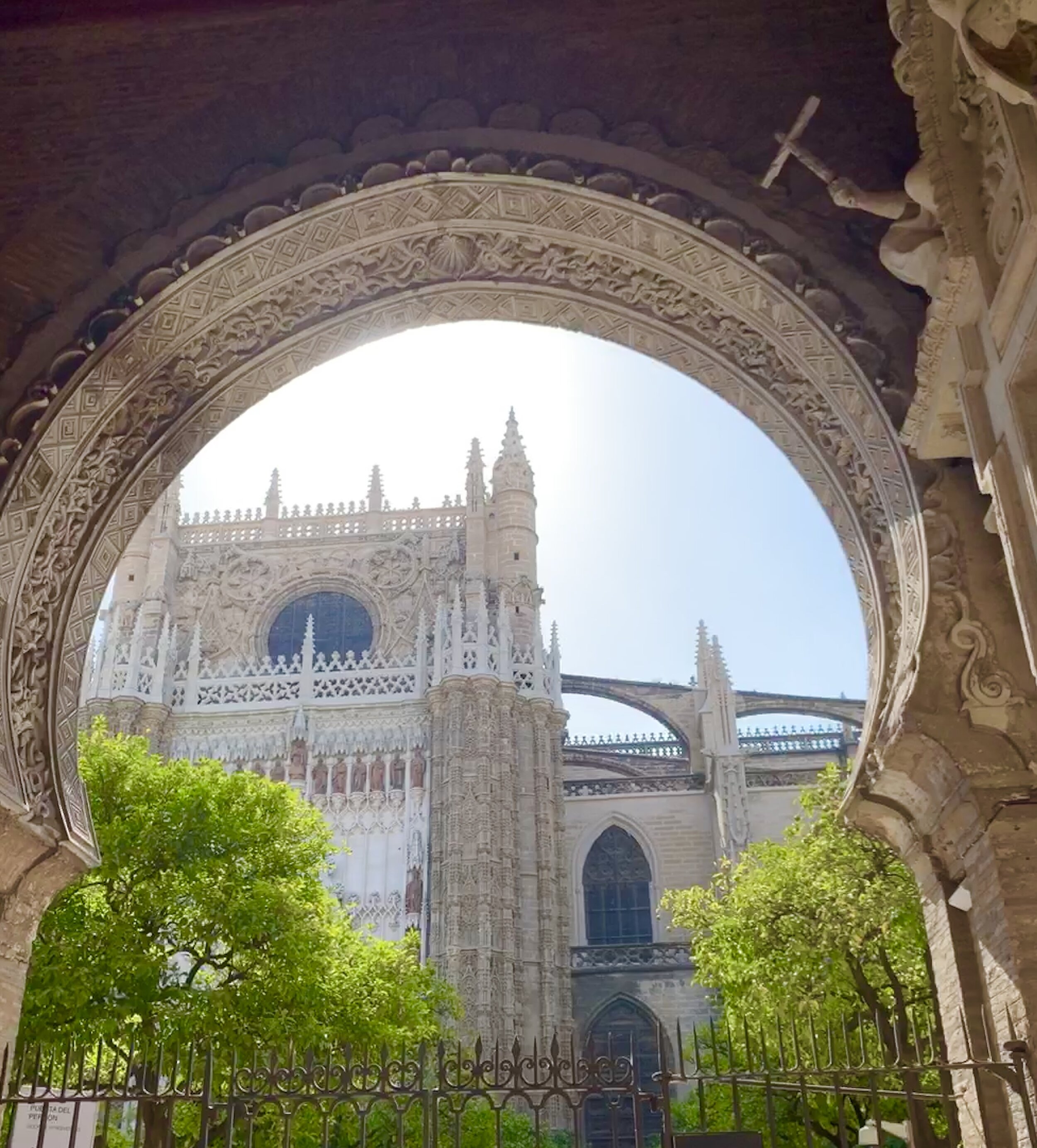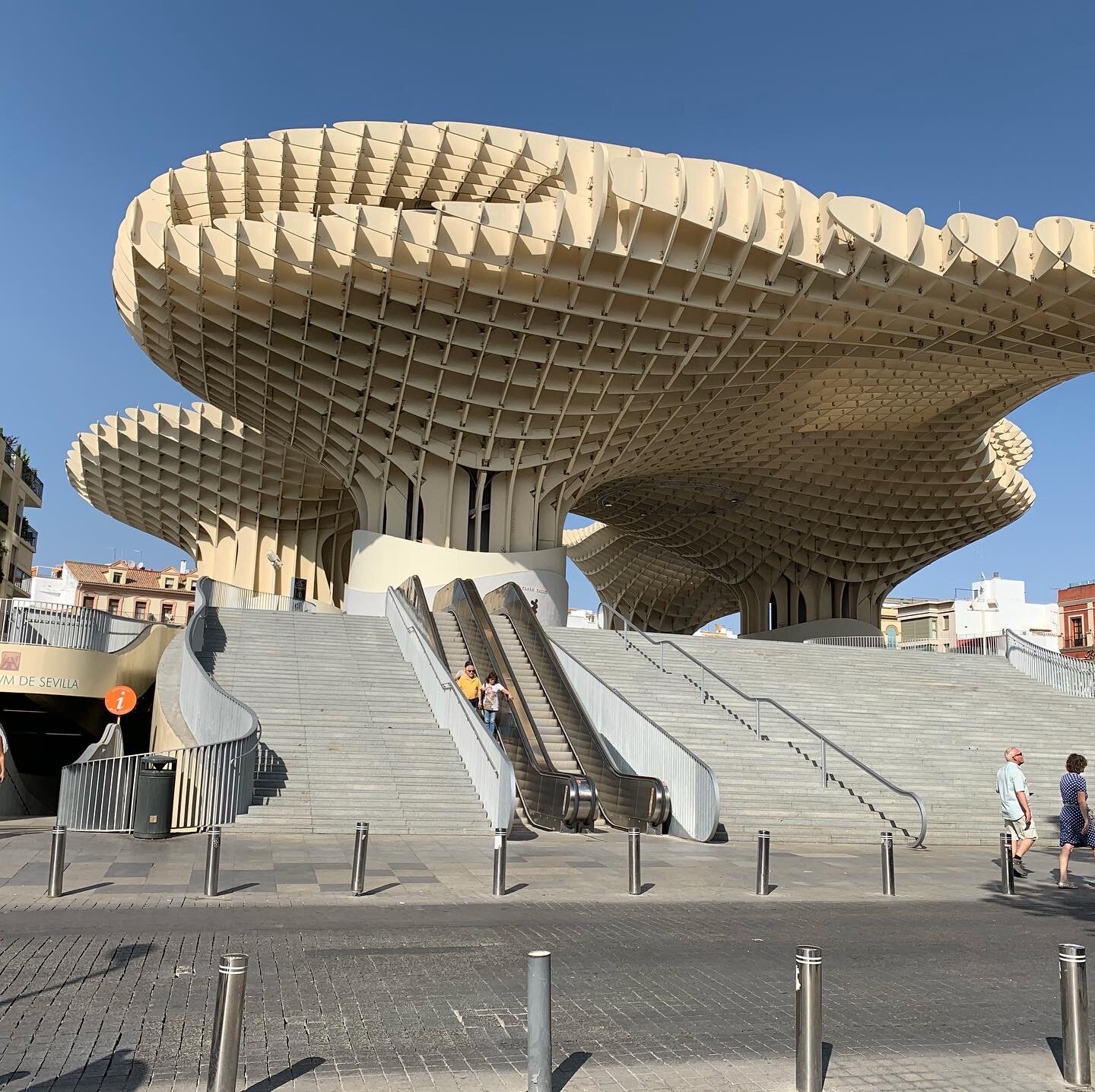The Algarve
Whatever expectations we may have had for our first visit to the southern coast of Portugal, they were far exceeded. We entered the region by car, driving the coastal route from Lisbon. When we picked up our rental car in Lisbon, I experienced once again the Seinfeld moment of being told that Avis did not, in fact, have the full-size automatic that I had “reserved.” They apparently had few options and thus offered me a BMW convertible at the same rate. We made this most of it, retracting the top at every opportunity and basking in the constant sunshine. During the eleven days we were in Portugal, we saw cloud cover on one day and never a drop of rain.
We arrived in Lagos in mid-afternoon with just enough time to check into our suite at the Villa da Denis and head to the Faro airport to meet our daughter Zoe who was flying in from London. After unpacking back at the Villa, we walked into the old historic part of town to dine at one of the area’s most acclaimed restaurants, dos Artistas. The setting and service were excellent, as reported in the Guide Michelin. We enjoyed our meal and the exceptional house wine. However, Allie ate a tuna ceviche that included some ingredient that should not have been there. It was a long, painful, uncomfortable night for her. Luckily, whatever poison she had consumed, its ill effects passed during the following day. At breakfast on the outdoor deck at the center of the complex, we later overheard other guests saying that the restaurant had been forced to close for a thorough cleaning. The fact that others had suffered the same fate did nothing to lessen the damage of an agonizing night.
Ever a trooper, Allie insisted we walk to the beach the next morning. Within five minutes, we came upon a spectacular beach, Praia do Camilo. A steep set of wooden stairs descended onto a sandy crescent surrounded by dramatic rock cliffs and pillars. More serendipity than excellent planning on my part, we discovered we were staying within a short walk of some of Portugal’s most iconic scenery. Over the next few days we explored the nearby beaches of Dona Ana, dos Pinheiros and da Balança. One of the highlights of our entire trip was a morning hike along the cliffs above these beaches from do Camilo to the lighthouse, Farol da Ponta da Piedade, and further on to Praia de Porto de Mos. This trek took us through some of the most photogenic coastal scenery imaginable. Daring to go to and peer over the cliff’s edge revealed the Atlantic’s waves crashing into multi-colored rock faces, continuing the process of creating gaps and caves that has been going on for eons.
We took full advantage of our open-air ride and ventured further westward, to another spectacular lighthouse, the Farol do Cabo de San Vincent, at the southwestern-most tip of the Iberian Peninsula. This area offered numerous opportunities to walk along the cliffs and climb onto ragged rock formations. In the nearby town of Sagres, from where the massive Fortaleza de Sagres juts into the Atlantic, we stumbled upon the best gelato of our trip, a well-deserved reward for our day’s wanderings.
Earlier I reported on the impacts of rising tourism in Lisbon. What we found in the Algarve was similar: though there at what is traditionally seen as the end of their season, we encountered crowds everywhere we went. Not off-putting crowds, but substantial numbers, nevertheless. One restaurant we tried to get into had no availability at any time during our stay. We commented that we would not want to see what these gorgeous beaches look like in the high season.
Everywhere we went during our days based in Lagos, we had no problem finding excellent meals. Seafood was a primary focus, but all the meats we had were terrific as well. You will be well-served, so to speak, to stick with local wine. While most of the Portuguese wines with which I was somewhat familiar come from the Douro or Alentejo regions to the north, the wines we tried from the immediate area of the Algarve were also a pleasant surprise. Prices for both food and wine were uniformly lower than we had expected.
I did come across what is perhaps my new all-time favorite wine note on a menu at a restaurant there—you know, those cute notations telling you this wine has a “strong nose, with just a hint of over-ripened blackberries, perfect to accompany wild boar” or some such nonsense. This one in Lagos was more pragmatic and straightforward: “pairs well with food!” Now that should distinguish it from the rest of the list!
The town of Lagos itself offered much beyond the beaches that surround it. While the waterfront marina area was not especially memorable, the historic center is an attractive maze of narrow cobblestoned streets offering outdoor cafes and street musicians. We would definitely recommend this area as an ideal base for exploring the Algarve.
Zoe was insistent that we must not leave this part of the Algarve without visiting the caves around the small fishing village of Benagil. Reliable friends had convinced her that this was an unmissable experience and was her info ever spot-on! Benagil is located between two larger Algarve towns, Portimão and Albufeira. We made the forty-minute drive on our final day in the area. Making our way down to the tiny beach was an adventure in itself. We arranged to join a group of eight in total in a small boat to explore the caves along the coast on either side of the beach. The caves were truly awesome. We were reminded of a similar boat trip we had done a couple of years ago touring caves on the Italian island of Capri. These in Benagil were far more impressive. Our entertaining guide took us inside several caves, one of which was dramatically bathed in sunlight from a round hole in its roof, a true natural phenomenon.
Seeing the caves of Benagil was a climactic way to end our stay in the western Algarve. Our visit here left us wishing for more time to explore the beaches and savor the dramatic land- and seascapes. We let our top down and headed further east to explore a very different coastline between the bustling town of Faro and the Spanish border.
EASTERN ALGARVE
The second half of our Algarve journey provided a surprisingly stark change of scenery. The land along the Atlantic here is flat—no more cliffs and rock formations—and the beaches are separated from the mainland by the lagoons and wetlands of the Rio Formosa estuary. We also chose a change of venue in that we booked our stay at an agri-tourism hotel in the countryside above the town of Tavira.
Hotel Rural Quinta do Marco sits in the midst of a 45-acre working farm, complete with chickens, sheep, peacocks and a mascot donkey. Our room was huge and well-appointed. It also featured a large private outdoor sitting area. The pools and surrounding areas were also very inviting. We enjoyed an excellent breakfast there each day, and, while dinner there was delicious, the dining large is a large open area that lacks warmth. The staff was friendly and eager to please. With rates that present an extraordinary value, it is a place we can heartily recommend as a base for exploring this region of the Algarve.
As usual, our first order of business was to visit the beach. We chose Praia do Barrill, a popular spot that is accessible via a pedestrian bridge and quaint train—unlike other beaches in the area that require taking a ferry. Barrill is a fine sandy beach about a mile and half long that offers cafes and the ubiquitous umbrella and chaise concessions. Its most unusual feature, however, is the cemetery in the dunes along the beach, not one lined with gravestones, but consisting of row after row of rusting anchors, buried to commemorate the generations of tuna fisherman who worked the area. Not a sight you see every day to be sure!
Just a few miles downriver from the pedestrian bridge at Pedra de El-Rei is the still operating fishing village of Santa Luzia, known for its local specialty, octopus. At the end of the river front is a large collection of tiny wooden huts used as living/working quarters by the fisherman. These structures are called cabañas, which is also the name of the next village we visited. At Cabañas numerous ferries and water taxis are at the ready to carry visitors across the lagoon to the long, white-sand beaches on the Island of Cabañas.
Our focus here was lunch, at the most celebrated restaurant in the region, Noélia e Jeronimo. It occupies an unpretentious position in the row of storefronts across from the boardwalk. This spot had been highly recommended, and the staff at our hotel suggested we go for lunch since dinner reservations can be hard to come by. To say that our experience there was disappointing would understate how we felt when we eventually departed two and a half hours later. An indifferent staff displayed the only haughty attitude we saw during our time in Portugal. More than an hour passed between our orders and the arrival of our appetizers. When the main courses finally arrived, Zoe was shocked to discover that several of the shrimp in her dish were frozen solid! I guess even superstars sometimes have a bad day.
Our other dining experiences in the eastern Algarve were thankfully much more pleasant. In Tavira, we found a delightful gastro-bar called Come na Gaveta. The unusual name deserves discussion. It literally translates as “eating in the drawer.” We heard two different explanations. In the first, we were told that long ago, when less affluent people would see friends or relations arriving for a visit, they would hide their precious food in a drawer to avoid having to share it. The second held that the locals of Tavira were referred to as “drawer-eaters” by neighbors because the oppressed office workers there could not leave their desks for lunch and thus had to eat food they had hidden in their drawer. Neither of these seemed very convincing. In any case, the tapas-style food at Come na Gaveta was excellent, and was served at a traditional table, rather than from a drawer. Our server was an engaging young man whose knowledge of the food and wine he recommended surpassed his ability to explain the strange name of the place. Whatever its meaning, this was one of our favorite meals in our time in Portugal.
On Saturday morning, we dropped Zoe off at the Faro airport to return to London to see friends and prepare for the following day’s Panthers Game at Tottenham. Afterward, we headed to the fishing port of Olhão, the Algarve’s largest, where on Saturdays the popular Municipal Market that offers local fish and produce daily expands along the boardwalk into a giant market offering all types of foods and crafts. The crowds we encountered testified to its popularity with both locals and tourists. It was as we left the throngs at the market to explore the town that we came, quite by accident, upon another wonderful culinary adventure.
Vai e Volta is no white table-cloth temple of haute cuisine. No, here everyone sits outside under a plastic canopy. The terms are simple, set forth in the welcoming sign, the English version of which is shown in the photo. We appeared to be the only non-Portuguese present. To elaborate, the price includes bread with butter, olive oil and olives, tuna/mayonnaise spread, tomato salad, boiled potatoes (both white and sweet) and a bowl of acorda, a local specialty resembling a pudding consisting of bread, garlic, ham, clams and more. The main event is fresh fish, grilled within sight and brought directly to your table. The service is “all you can eat.” The two of us were served four whole fishes—I won’t try to identify them but will say they were as good as any I’ve had anywhere. In addition, we were served a tuna steak and a filet of undetermined origin, before we had to call it quits. Full disclosure requires me to tell you that drinks cost extra: a liter of water or a glass of house wine will set you back another euro. Our bill, service included came to 26 euros! By the way, the name means, “Go and Come Back” —I think we will!
Allie and I chose to spend our Sunday visiting the historic city of Sevilla rather than watching the football game. Our hotel was less than twenty miles from the border with Spain. The drive into Sevilla was easy and the trip so worthwhile. What a beautiful city! We started by visiting the massive Gothic Cathedral and the Moorish Alcázar castle that stands opposite it. A pleasant walk brought us across the phot-worthy Guadalquivir River to the charming neighborhood of Triana. We wandered the shop-lined streets, eventually stumbling upon a bustling tiny tapas bar where we joined the masses spilling out onto the sidewalk to wait our turn for a delightful lunch.
Our afternoon walk led us to a sight unique to Sevilla: Las Setas (the mushrooms), the common name for what is officially the Metropol Parasol project. This is a large-scale work of art that defies description. It is huge, several stories tall and covering city blocks. It is built of wood, making it the largest timber-framed structure in the world. My impression can be summed up in a single word: bold!
THOUGHTS ON HEADING HOME
We left the Algarve the next day, satisfied that we had discovered a beautiful new place to which we would hope to return soon. Portugal was a joy. We loved the places, the people, the weather, the food and wine.
Here are a few general remarks about this appealing destination:
o The roads are excellent (I dread to see what my final toll bill will be!). Portugal is a compact country and easy to tour by car.
o English is spoken everywhere; language should be no barrier for Americans considering a visit
o The general vibe in the cities and the small towns is a very laid-back, laissez-faire one.
o We felt completely safe everywhere we went. Other than warnings about pickpockets in Lisbon, we saw no indication that crime is a major problem here.
o Costs seemed far below that we’ve experienced in other EU countries, making vacations here a great value.
o If you have trouble dealing with rejection, leave your American Express card at home.
o One thing you will find in Portugal that you’ve probably not seen before: shop after shop offering nothing but products made of cork! Handbags, shoes, umbrellas—you can’t believe the array of items that can be rendered from this tree bark that has traditionally closed wine bottles and served as bulletin boards. For me, the only cork items I need are small cylinders with red stains on one end.
o There is something for everyone here: history, music, beaches, food and wine, art, and much more. While we were only in Lisbon and the Algarve on this trip, we know from a previous visit that there is also much to see north of Lisbon, e.g., Sintra, Porto, the Douro valley.
o If you haven’t visited yet, put Portugal on your to-see-soon list!

